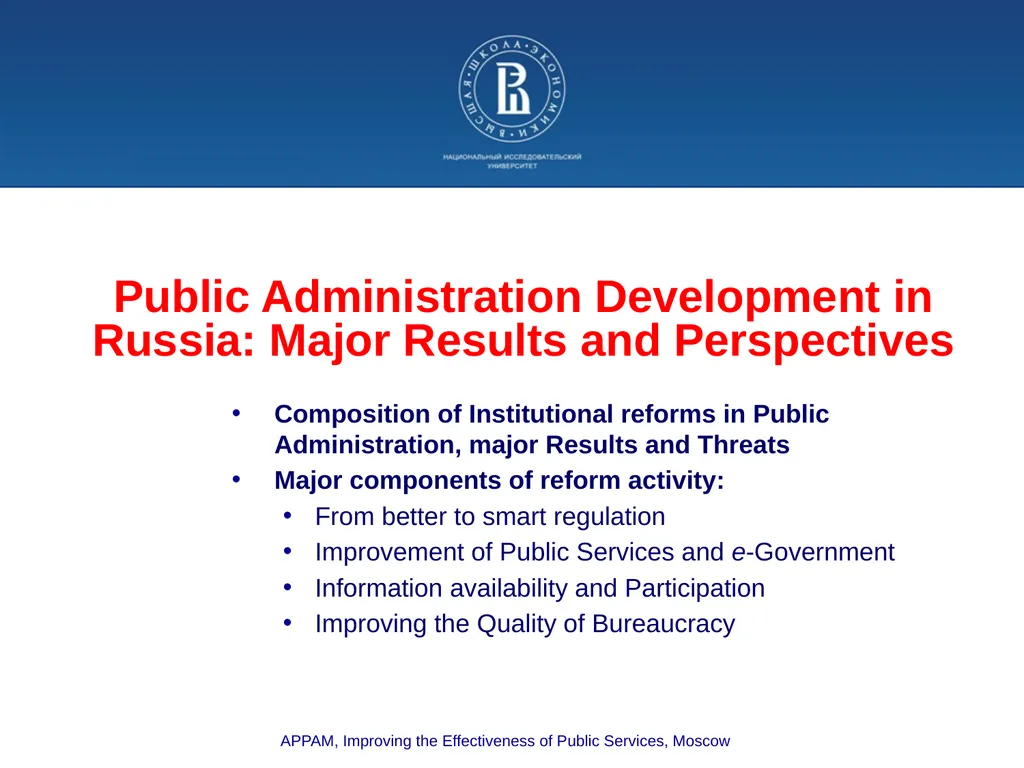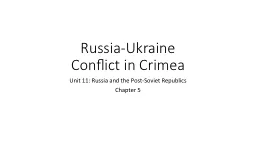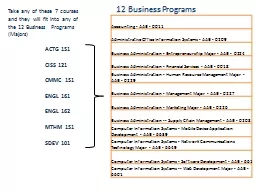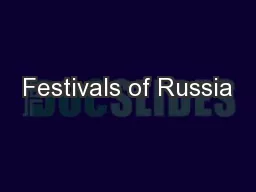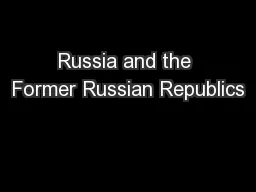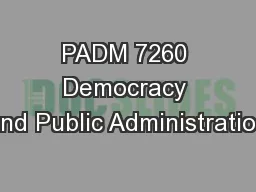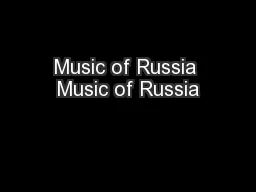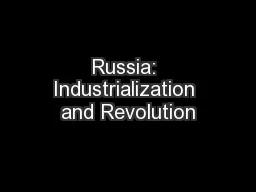Public Administration Development in Russia: Major
Author : tatiana-dople | Published Date : 2025-06-23
Description: Public Administration Development in Russia Major Results and Perspectives Composition of Institutional reforms in Public Administration major Results and Threats Major components of reform activity From better to smart regulation
Presentation Embed Code
Download Presentation
Download
Presentation The PPT/PDF document
"Public Administration Development in Russia: Major" is the property of its rightful owner.
Permission is granted to download and print the materials on this website for personal, non-commercial use only,
and to display it on your personal computer provided you do not modify the materials and that you retain all
copyright notices contained in the materials. By downloading content from our website, you accept the terms of
this agreement.
Transcript:Public Administration Development in Russia: Major:
Public Administration Development in Russia: Major Results and Perspectives Composition of Institutional reforms in Public Administration, major Results and Threats Major components of reform activity: From better to smart regulation Improvement of Public Services and e-Government Information availability and Participation Improving the Quality of Bureaucracy APPAM, Improving the Effectiveness of Public Services, Moscow Composition of institutional reforms in Public Administration 2 2002 2004 2006 2008 2010 2012 Public service reform (1) X Public service reform (2) Administrative reform (1) X Administrative reform (2) E-Russia X 2020 Information Society Program Performance Management and Budgeting National anticorruption strategy Division of responsibilities between federal, regional and local levels of government Better regulation Comparative institutional advantages – former USSR republics 3 Key performance indicators of Administrative reform (2005 - 2010) 4 Number of executive bodies in Russian Empire, USSR and RF Growth of Bureaucracy in the RF Number of civil servants 2004 - 5634 functions 2010 - 6876 functions About 20% of the powers of the authorities have full-fledged regulatory support There is insufficient correlation of powers with the aims and objectives of national development 5 6 Weaknesses and Threats - Priority Tasks New Agenda for 2011 – 2020 Effective regulatory and legal framework Qualitative and accessible public and municipal services Extensive reformation of the relationship between the state and the civil society Key deficiencies of regulation Lack of clear and transparent criteria for and assessment procedures of unacceptable risks as a condition for government regulation and it’s objectives Declarative nature of requirements and their lack of correlation with achievement of government regulation objectives (high discretion of public servant decision) Excessive forms of control (monitoring and supervision) of established mandatory requirements and their duplication Preventive nature of forms of government regulation, creation of administrative barriers to commencing business activity or for market entry for products Widespread intermediary “services” in the performance of control and supervision government functions Nonconformity of the subjects of government regulation, requirements and forms of control to international documents Chaotic nature of implementing and excluding measures of government regulation 7 As a result: A drop in innovative and business activity Corruption and abuse of office by public servants Loss of competitive edge The burden of government regulation 8 The World Economic Forum - The Russia Competitiveness Report 2011 Percent of senior management time spent dealing with the government 9 The World Economic Forum - The Russia Competitiveness Report 2011 The cost
